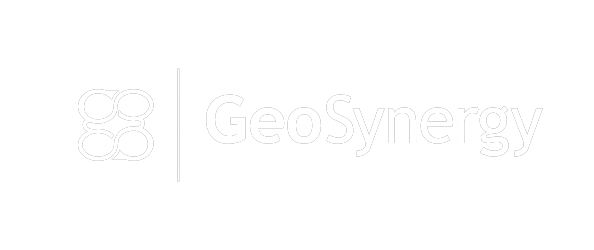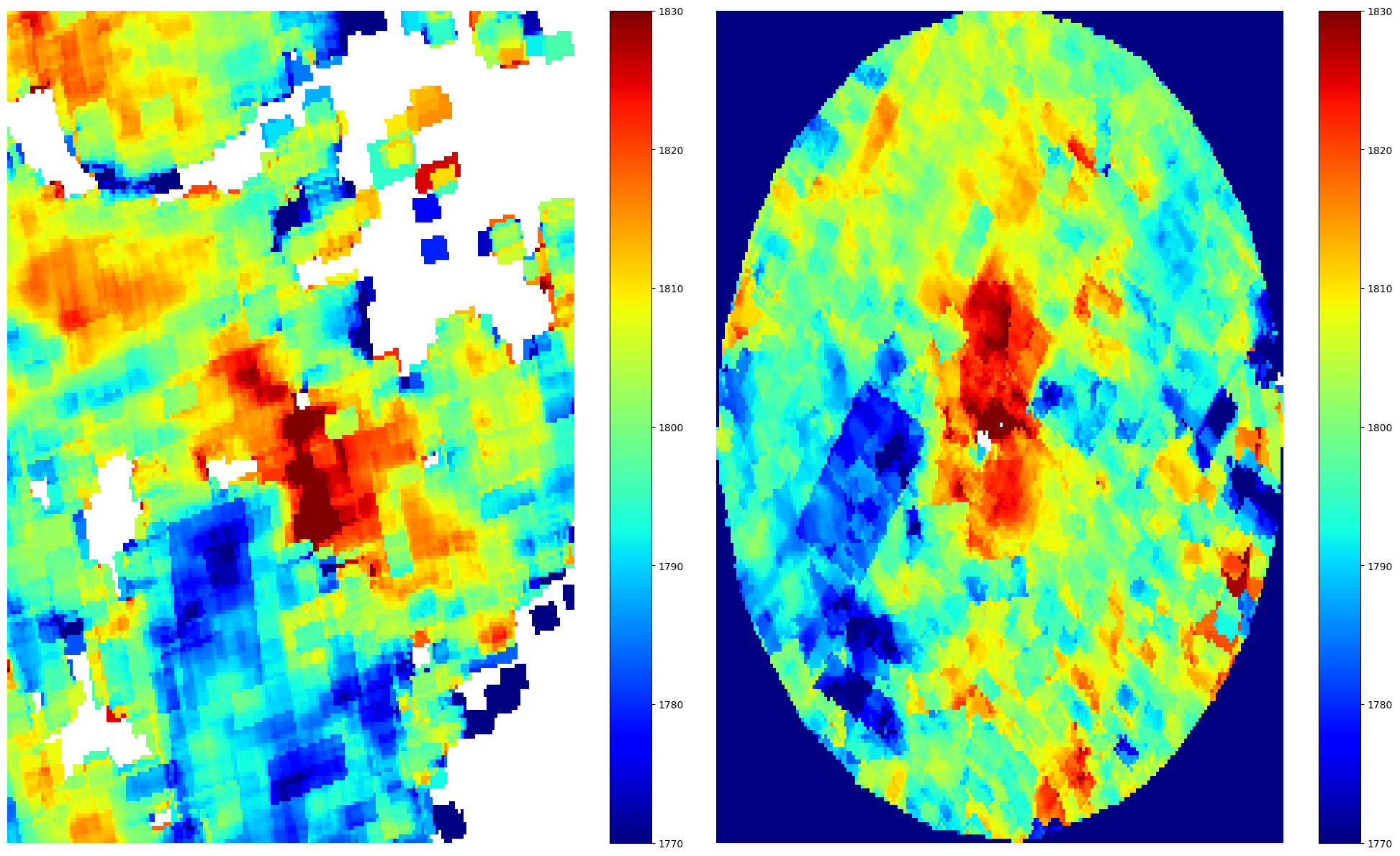Enhancing and Localizing Methane Point Emissions using Wind-Rotation.
Methane Targeting from Active Coal Mines.
Data provided by the TROPOMI sensor, of Copernicus Sentinel-5, has established itself as an important tool in the remote sensing of anthropogenic methane. With its repeat time of 1 day, TROPOMI data is excellent for detecting large emission events. Its spatial resolution, at 7x5.5 km2, has previously been insufficient to pinpoint methane point sources. However, a processing technique can enhance TROPOMI data, and allow point sources to be localized with more confidence.
First reported by Maasakkers et al. [1], wind rotation is a simple, but effective, technique for enhancing methane plumes in TROPOMI imagery. In so-doing, it can be used to localize methane emissions, and/or inform the targeting of more fine grained imaging, such as that produced by GHG-SAT [2].
The technique has 3 stages, for a given AOI and time window: firstly, the spatial resolution of TROPOMI data is enhanced via spatial binning; secondly, each TROPOMI product is rotated to true north, around a fixed point, based on historical wind data; lastly, the stack of TROPOMI products are reduced into a single, wind-rotated mean product. This process is then repeated over a grid of rotation centers. Candidate plumes are then evaluated, and the best enhancement selected. The point of rotation of the optimal plume corresponds to its point of emission.
The following example shows this process, as applied to the Raspadskaya coal mine methane emission, Kemerovo Oblast, June 2022 [3]. As the rotation center gets closer to the point of emission, the plumes become more coherent.
Fig.1. Grid of wind-rotated methane emissions, from the Raspadskaya coal mine (June 2022). Plumes become more distinct, as we get closer to the suspected point of emission.
Maasakkers et al. [1] gave the example of a landfill in Buenos Aires (analysis here repeated). The left-most figure shows spatially binned, but unrotated, mean TROPOMI data. The right-most figure shows the effect of wind rotation on plume enhancement.
Fig.2. The left figure shows mean TROPOMI data for the Buenos Aires AOI. The right figure shows wind-rotated mean TROPOMI data, with an optimal rotation center, resulting in a clear enhancement of a methane plume.
At Geosynergy, we have been exploring how this technique can be developed, and applied to the detection of methane emissions from Australian coal mines. In some cases, where TROPOMI data is sufficiently rich, the technique can be applied to monthly TROPOMI data, such as in the following examples (the point of rotation is marked with a white pixel, rotation center not fully optimized).
Fig.3. wind-rotated methane plume, Hail Creek mine, QLD, August 2018.
With the requisite domain knowledge, both spatial (mine stricture) and temporal (mine activity), we can attempt to interpret the cause of the observed emission. The following figure shows a wind-rotated methane plume at Moranbah North coal mine in October 2020, along with a map of the mine infrastructure. Relevant AOIs are highlighted.
Fig.4. wind-rotated methane plume, Moranbah North mine, QLD, October 2020. Relevant mine infrastructure is highlighted.
Methane from Inactive Coal Mines.
Interestingly, inactive mines, such as Ravensworth underground coal mine owned by Glencore, are substantial methane emitters. The Australian Conservation Foundation recently found that Ravensworth reported 156 kt CO2-e to the CER in 2020 [4].
Fig.5. mean, vs wind-rotated, methane for Ravensworth (a closed mine), November 2020.
Research and Development - Farm Dams.
We are currently undertaking research and development, to explore whether this technique can be applied to remote sensing of methane emissions from smaller targets, such as farm dams [5].
Because farms dams are relatively small, it may be difficult to distinguish their emissions from atmospheric methane, using the wind rotation approach. An alternative, regional, approach may be better suited.
In a recent study by Huber et al. [6] the authors selected a test site, and 2 reference sites. They used "forested regions upwind of the cropland domain as reference sites, to estimate daily average background TROPOMI NO2" (figure 5 - dashed boxes). Reference sites provide "nearby, clean upwind domains containing few major NOx sources, which are ideal for background quantification". Which reference site they used varied, according to the predominate daily wind direction (historical ERA5 data). Days with predominantly N wind were excluded (due to potential urban emission contamination).
"The reference sites facilitate the calculation of the NO2 column enhancement over the cropland domain by subtracting the average inflow background NO2 VCD from the average cropland NO2 VCD."
We are currently in the process of testing this approach, using spatially binned TROPOMI data.
Fig.6. (a) Satellite image of the Mississippi Delta study region showing cropland (solid white box) and upwind (dashed white boxes) domains used to calculate daily NO2 enhancements. Light green regions are primarily cropland; dark green regions are primarily forest.
(b) TROPOMI tropospheric NO2 VCDs on 14 May 2019, 5 days before a precipitation event.
(c) TROPOMI tropospheric NO2 VCDs on 24 May 2019, 5 days after a precipitation event, with enhanced NO2 VCDs over cropland indicative of a drydown soil NOx emissions pulse [6].
Research and Development - Ground Truthing.
As with all approaches, that are not based on direct measurement, it is important to validate our findings using ground truth data. In the context of methane emissions, this could take a number of forms.
Firstly, NGER reporting requires that mines undertake periodic in situ methane monitoring, and access to this data would enable direct correlation of ground truth, and remote sensed, methane [7]. Secondly, in the context of farm dam methane, Blue Carbon labs are have undertaken a number of direct measurement field studies [5].
Thirdly, ground truthing could be achieved using an alternative remote sensed product, with higher spatial resolution, such as GHGSat [2]. Although less accurate than in situ monitoring, GHGSat still has an effective spatial resolution of 25m, allowing for the validation of emissions identified by TROPOMI [8].
Fig.7. GHGSat image, showing methane concentrations over a coal mine in the Shanxi province, China.
Lastly, it is interesting to note, because of the spatial and temporal resolution of TROPOMI, screening of large areas is possible. The fact that candidate plumes need to be evaluated by eye, and the best enhancement selected, is potentially limiting. However, with a sufficient dataset, it is plausible that a machine learning and/or deep learning model could be trained to predict “plume enhancement” from input plume candidates. This would enable almost realtime wind-rotated TROPOMI screening, simultaneously, for multiple locations.
References
[1] Maasakkers, J.D., Varon, D.J., Elfarsdóttir, A., McKeever, J., Jervis, D., Mahapatra, G., Pandey, S., Lorente, A., Borsdorff, T., Foorthuis, L.R. and Schuit, B.J., 2022. Using satellites to uncover large methane emissions from landfills. Science advances, 8(31), p.eabn9683.
[2] GHGSat, Methane emissions from opencast coal mines measured from space. https://www.ghgsat.com/en/newsroom/world-first-methane-emissions-from-opencast-coal-mines-measured-from-space/
[3] GHGSAT report of the Raspadskaya coal mine methane emission, Kemerovo Oblast, June 15 2022. https://www.ghgsat.com/en/newsroom/russian-mine-produces-biggest-methane-leak-ever-seen-by-ghgsat/
[4] Ember, Abandoned Mine Methane. https://ember-climate.org/insights/research/tackling-australias-coal-mine-methane-problem/
[5] Blue Carbon Labs, Australian Farm Dam methane. https://www.bluecarbonlab.org/farm-dams/
[6] Huber, D.E., Steiner, A.L. and Kort, E.A., 2020. Daily cropland soil NOx emissions identified by TROPOMI and SMAP.Geophysical research letters,47(22), p.e2020GL089949.
[7] Estimating emissions and energy from coal mining guideline (NGER). https://www.cleanenergyregulator.gov.au/DocumentAssets/Documents/Estimating%20emissions%20and%20energy%20from%20coal%20mining%20guideline.pdf
[8] ESA Summary of GHGSat. https://earth.esa.int/eogateway/missions/ghgsat







